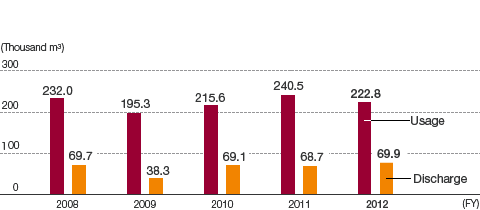 Efficient Use of Resources
Efficient Use of Resources

Basic policy
The Advantest Group pursues operations encompassing the "Three Rs" (reduce, reuse, and recycle) with the aim of realizing a recycling-oriented society.
In addition, the Group is building up its parts separation initiatives initially launched in fiscal 2009, pursuing efforts to recover valuable materials from waste in a manner that fully complies with all relevant laws and regulations, and conducting proper management and disposal of waste generated in the course of business operations.
Volume of waste generated/recycling rate
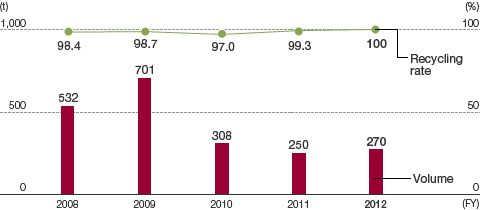
Memorandum of Understanding (MOUs) entered into with waste disposal service providers stipulating exclusion of anti-social forces
Companies have been imposing written obligations stipulating that contractual relationships may be terminated if the counterparty is found to be involved in business dealings with an anti-social organization. This is premised on ordinances established by the Tokyo Metropolitan Government and other municipalities calling for the elimination of crime syndicates.
Moreover, the Japan Business Federation (Keidanren) in calling on companies to overhaul their corporate behavior is recommending that they conclude such written agreements as one means of ridding society of anti-social forces.
In accordance with ordinances calling for the exclusion of criminal elements and in line with recommendations of Keidanren in that regard, the Advantest Group's compliance initiatives entail concluding Memoranda of Understanding with all waste disposal service providers involved in our business dealings, stipulating that contractual relations may be terminated if it is discovered that a business partner acts as an anti-social organization.
Reducing waste through better shipment packaging
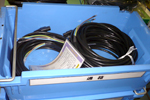
Packing material (after improvements)
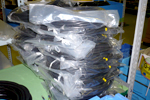
Packing material (before improvements)
The Advantest Group purchases some of the cable used in products from overseas sources. Due to quality assurance concerns, we used to take delivery of cable packaged in cartons (corrugated boxes) in 300 unit lots. However, ample amounts of cushioning material in those boxes meant that extra space remained for more items. Accordingly, we realized that if we could ship more cables in each box, we would reduce our consumption of packaging material, while at the same time we would be cutting shipping expenses and using less storage space.
As such, to improve packaging practices we worked with our suppliers in conducting stack testing and drop testing of boxes containing more cables, and made sure that no implications would arise in terms of product durability and quality retention.
In November 2011, after having looked into the matter, we opted to increase the number of cables shipped in a single box, from 300 units to 500. We also reduced usage of cellophane tape(Scotch tape) for securing packing material, from eight taping points to two, thereby reducing man-hours required to unpack the shipments. As a result of these changes, we expect to use 8,374 fewer boxes per year and anticipate a reduction in labor devoted to unpacking shipments by 745 man-hours.
Resource consumption reduced through packing material improvements
We also work with our suppliers of packaging materials used for shipping our products, from the design phase to high-volume production. In fiscal 2012, we revamped our techniques for absorbing the impact of shock endured by cargo on pallets used for overseas shipments, and thereby reduced space requirements by 12% without altering impact absorption performance or effective internal storage dimensions. This consequently reduced the volume of reinforced corrugated board we consumed by roughly 1.3 tons in fiscal 2012.
New pallet designs have enabled us to minimize product vibration occurring during shipping, while also allowing for minimal clearance between products and packing materials. With that, we reworked the reinforced corrugated fiberboard sleeves attached to the pallets to make shipments smaller and lower, and therefore more compact.
The smaller packaging size also enabled us to reduce shipping costs, particularly air freight charges, thereby contributing to even greater customer satisfaction.
Results of reworking pallet design and materials
Ex. Medium-sized pallet
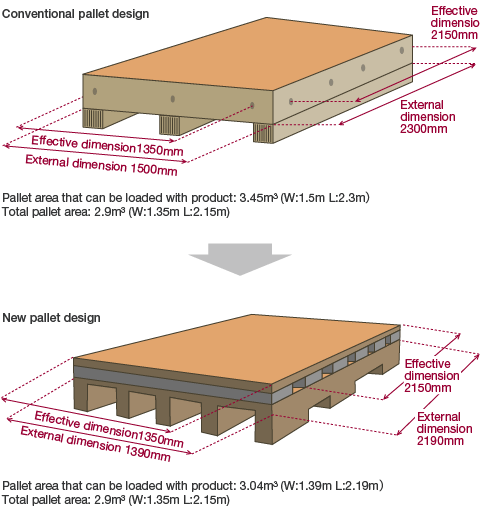
Results of reworking sleeve height
Ex.) Sleeve for T6373 TH(Test Head)
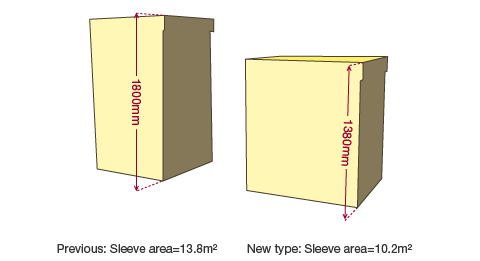
Effective use of water resources
The Group's production processes consist mainly of assembly, adjustment, and inspection operations, and do not require as much water as typical manufacturing processes. As such, the company's water consumption derives mainly from air conditioner operation, kitchen and washroom use, and as drinking water. Meanwhile, we continue to re-use discharged water for flushing toilets, and in fiscal 2012 persisted with efforts from the previous year to make effective use of our water resources over the summer months, during which Japan's electricity conservation measures were in effect, by watering our grounds and facilities with discharged water delivered via the sprinkler systems installed on rooftops of our key business offices. Going forward, we are committed to pursuing efficient use of our water resources, and will make sure that all of our employees engage in water conservation practices, such as by using waste water from our biotope in tree planting operations.
Water consumption and discharge
